Recitals |
Testimonials |
||||||||||||||||||||||||
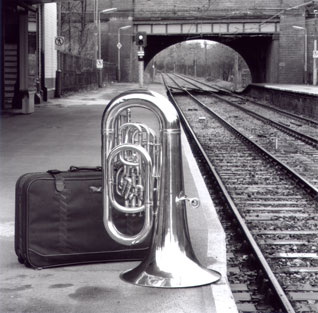 |
OverviewTravelling by Tuba have two main recitals to offer plus other options in Travelling by Tuba and Friends. The variety of instruments is mirrored by the wide range of musical influences in their ever increasing repertoire. Hear how Brahms, Liszt, Telemann and others might have written for the Tuba. Balancing these transcriptions are original compositions for the tuba, piano solo and jazz on the Sousaphone. What’s more, music is not everything. Humorous anecdotes and informative chat also combine to give an unforgettable performance with something for everyone. Travelling by Tuba are selected artists for the Making Music Concert Promoters Network for 2013/2014.
|
||||||||||||||||||||||||
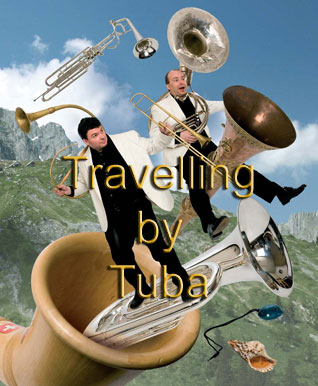 |
Travelling by Tuba IAlthough the tuba is of course prominent in all their concerts it must be emphasised that this is not just a tuba recital. Playing an innumerable array of wind and brass instruments, Travelling by Tuba present a concert spanning over fifteen thousand years of music. Beginning with the simplicity of the first natural instruments – the conch shell from the Pacific, the Viking horn from Scandinavia and the Australian didjeridu— the history of the tuba is traced. These mono-tonal instruments led directly to the development of the first wind instruments. Journeying through the courts of Europe you will hear typical music of the time played on early instruments including the cornett and the sackbutt. As the concert moves through the centuries the instruments become more complicated, unusual and original. The serpent, first used in French church music during the fifteenth century, was the first proper bass wind instrument, remaining popular for over two hundred years. Much favoured during the first half of the nineteenth century was the bassoon-shaped ophicleide made of brass with holes covered by keys. It was used as a regular member of the symphony orchestra by composers such as Berlioz and Mendelssohn. The dawn of the industrial age saw the invention of the valve which gave rise to a new family of instruments including the tuba. |
||||||||||||||||||||||||
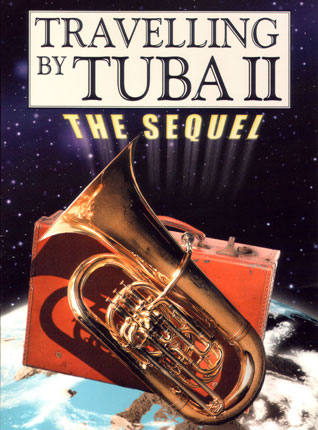 |
Travelling by Tuba IIFollowing the success of their first show the duo have devised Travelling by Tuba II— The Sequel. This all new show features wind and brass instruments from the four corners of the world and, impossible as this may sound, the opera Carmen in four-and-a-half minutes! Imagine the gladiatorial Roman horn, with its immense sound, playing a fanfare and march two thousand years ago as the Roman Army marched toward its enemies. Compare this with the Swiss alpine horn— the original, one thousand year old mobile phone— which was carried by shepherds up into the mountains and which could be heard more than fifteen miles away. Admire the craftsmanship of the beautiful Chinese dragon-headed trumpet and a pair of eight-foot-high Tibetan dungs used by the Buddhist monks. Contrast these with the mellow sounding gems horn and the trickiness of the ocarina. Hear the blaring Turkish schnib and the Zulu warrior kudu horns. Marvel at the cimbasso, Verdi’s tuba with a forward-facing bell— such an amazing variety of sights and sounds! |
||||||||||||||||||||||||
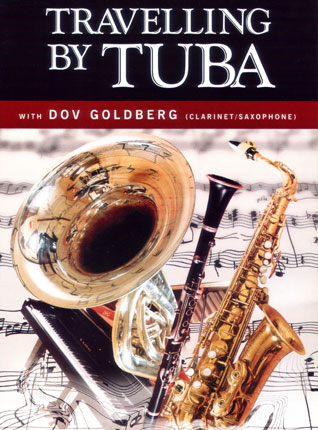 |
Travelling by Tuba and FriendsTravelling by Tuba and Friends combines one of our other concerts with a leading musician from the UK. With Travelling by Tuba and Friends, a concert organiser can choose the combination to best suit their taste and needs. To perform alongside Travelling by Tuba we offer the talents of a third musician to lend even more variety. Choose from one of the following experienced classical musicians:
As well as solos and duets, special trio arrangements have been written giving each concert an individual repertoire. You may be surprised at the beauty of Bizet’s Pearlfishers Duet played as a euphonium and tuba duet, whereas in songs from Porgy and Bess the soprano singer and tuba combine impressively. The repertoire in each concert is balanced between original works and transcriptions which are introduced in an informative, yet often light-hearted manner. |
||||||||||||||||||||||||
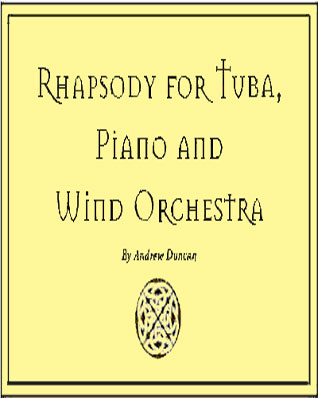 |
Rhapsody for Tuba, Piano and Wind OrchestraThe ‘Rhapsody for Tuba, Piano and Wind Orchestra’ by Scottish Composer Andrew Duncan, was commissioned by Gavin Woods (Tuba) and Stewart Death (Piano) with funds from North West Arts and the Performing Rights Foundation. They performed the world premiere on October 26th 2001 at the Royal Northern College of Music with the RNCM Wind Band under the direction of James Gourlay. Its first performance with Brass Band took place at the Lowry Centre with the Leyland Brass Band directed by Richard Evans. In May 2002 Gavin and Stewart appeared as guest soloists in a critically acclaimed performance of the Rhapsody, accompanied by the US Army Band (“Pershing’s Own”) in Greensboro, North Carolina. The ‘Rhapsody for Tuba and Piano’ owes much of its pulsating energy and crisp melodic lines to the inspiring, rugged scenery of the Hebridean Island of Lewis (home of the composer). The Rhapsody falls into three main sections. The opening section features the solo instruments in octaves and later on as a more formal musical pairing during which the two main themes of the Rhapsody are first heard. Linking the first and second sections is a virtuosic scherzo for solo piano. The second section begins with an ominous interpretation of the opening theme, which gives way to a new theme loosely based on Gaelic melodies. The third section (preceded by a long glissando from the Solo Tuba) includes two main ideas, the first a fast rhythmical passage, the second a long lyrical solo Tuba Tune. The final coda brings a restatement of the opening themes. |
||||||||||||||||||||||||